Researching vintage and antique pieces that are imprinted with a patent number or patent date doesn’t always do much to increase the selling price of an item. But looking at those patents can give you historical context. Searching further, maybe finding a period catalog featuring the item, broadens that perspective by showing you how prominently it was displayed, how was it described and what the original cost was.
There’s something intriguing about looking into the history of everyday things. Common household things generally evolve over time. Patents can tell us how that particular version of a thing was innovative, how it was an improvement over its predecessors. Patents also give you the name of the inventor. That can lead to finding interesting info nuggets. Not particularly important for selling something vintage, but interesting none the less.
Where do you go to look up a patent? This website from the US Patent and Trademark Office.
We had three common things cross our threshold, all with patent numbers. There’s nothing earth shattering about any of them, and only a bit of mystery about one of them. We sleuthed around online to find out what we could. Here’s what we learned when we started researching these vintage pieces…
1930s Foley Food Mill

Foley Food Mills are quite common, in fact they are still made. Being partial to red handled kitchen tools, we particularly like this one. Inside, the chromed finish is wearing off where the blade was cranked round to mash potatoes, puree baby food and make applesauce. On that blade is the patent number: Pat. 1921936. But the Foley Manufacturing Co. is not the patent holder. It’s some guy named Jean Mantelet.
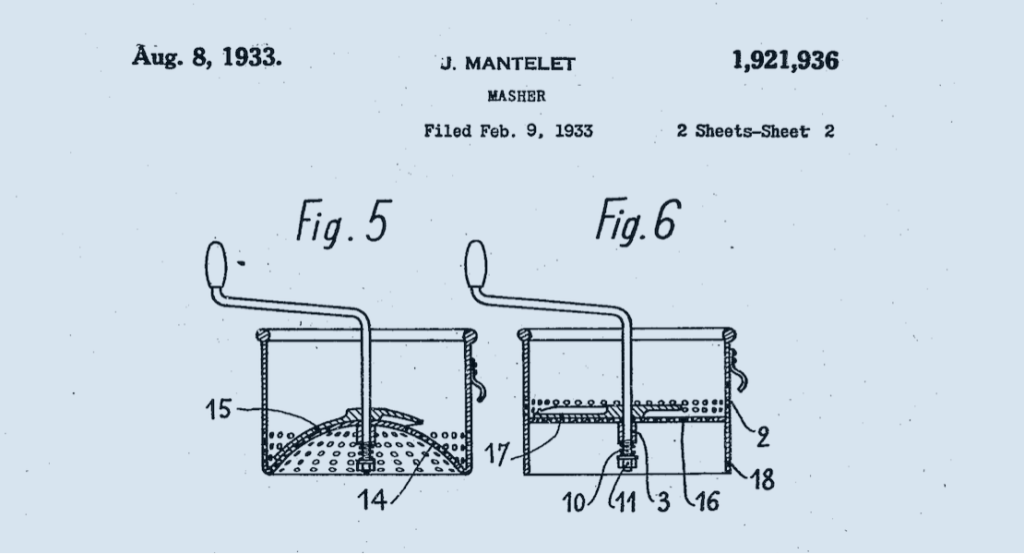
A little sleuthing reveals that food mills were invented by Jean Mantelet of Mantelet et Boucher, a small maker of kitchen hand tools in Bagnolet, France. Mantelet’s second company, the kitchen tools company Moulinex, is much better known. Mantelet’s food mill, the Moulin-Légumes, was patented in the US in 1932.
About the same time Mantalet was getting started, William M. Ringer founded the Foley Manufacturing Co. in Minneapolis, MN. The Foley food mill, by far the company’s most famous and popular kitchen tool, was brought to market in 1934, two years after Mantelet received his US patent. Since the food mill is imprinted with Mantalet’s patent, it must have been by a legal arrangement. We didn’t dig far enough to find the documentation of the deal. It wouldn’t have made the origin story any more interesting and it was definitely going to involve a lot of keystrokes, probably more than it was worth.

1900s Bernard Eyelet Setter No 180
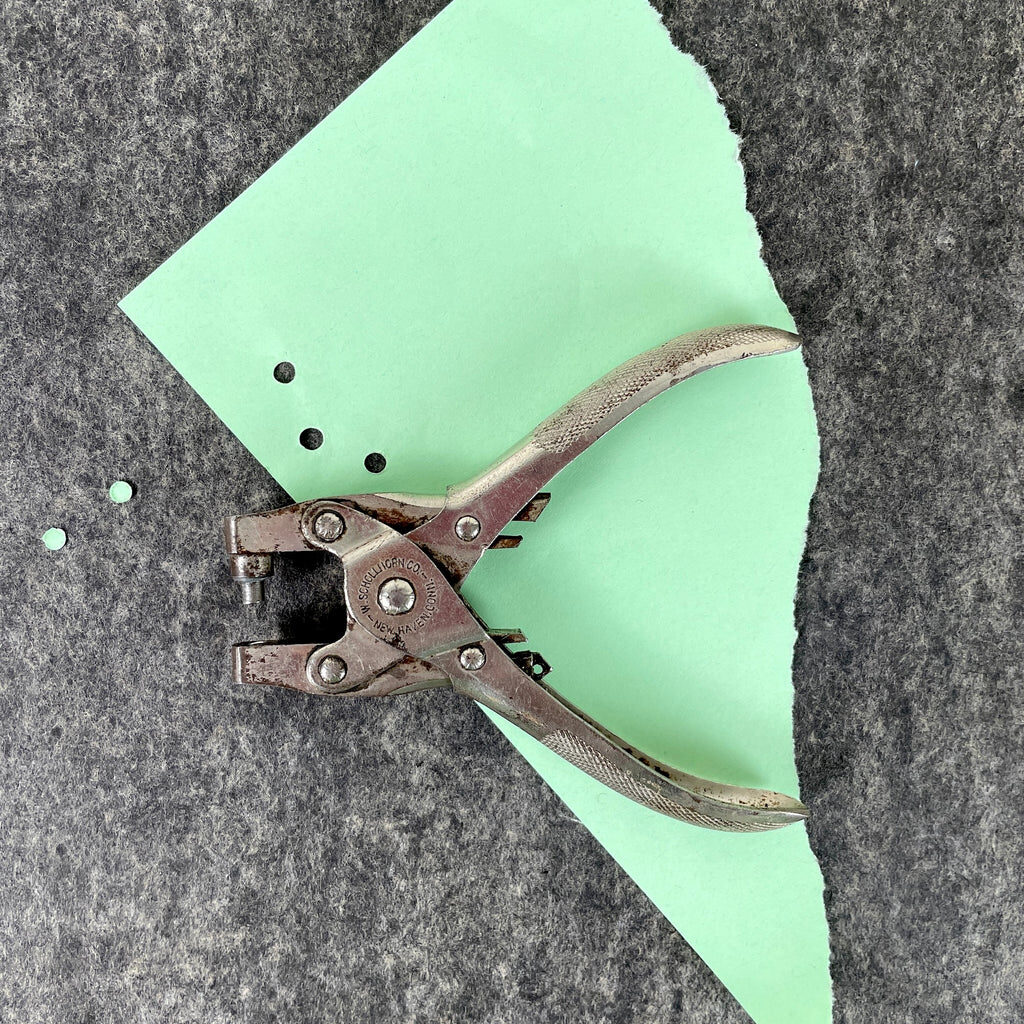
This unassuming small hand tool was in a desk drawer. It looks like a small and somewhat peculiar hole punch. And it is in a way. It was used for setting eyelets, small metal rivet-like things, mostly in legal documents. The stapler was invented in 1866, but staples could be removed. According to OfficeMuseum.com, eyelets were difficult to remove and replace so they were preferred by the legal profession as small insurance that a sketchy heir would be hard-pressed to replace a typed page in a will.
As eyelet punches go, this one is pretty small. There were many larger punches with long handles to provide good leverage for getting through larger stacks of paper. However, it was found in the desk of a woman who worked in a law office in her twenties, some 70 plus years ago. No doubt she used it for assembling smaller documents for the attorneys in the office.
The punch is marked “Bernard’s” with patent dates and on the reverse with “W. Schollhorn Co. – New Haven, CT.” The Schollhorn Co. made many hand tools, almost all pliers style. William A. Bernard was a tool designer/inventor who provided designs for Schollhorn, including gas pliers, jeweler’s pliers, leather punches, electrician’s pliers, nippers and more. We were able to find a few Schollhorn catalogs, from that we’re pretty sure this pair is Model No. 180. And although we were able to find a few of Bernard’s patents, we were not able to find this particular one.

To dig up this information, we searched terms like “W. Schollhorn catalog,” “Hawkins & Jenkins” (name imprinted on the tool, they were a hardware distributor in New York City), the “Solidhed” (also imprinted on the tool, (Solidheds were brass rivets made in Hoboken, NJ) and finally “William A. Bernard” after excavating far enough to find his full name. Bernard was quite a prolific inventor, designing lots of pliers, cutters, punches, nippers and dividing devices, mostly for Schollhorn. His heirs should be proud, he made tools that have lasted for generations.
1980s Napier Necklace
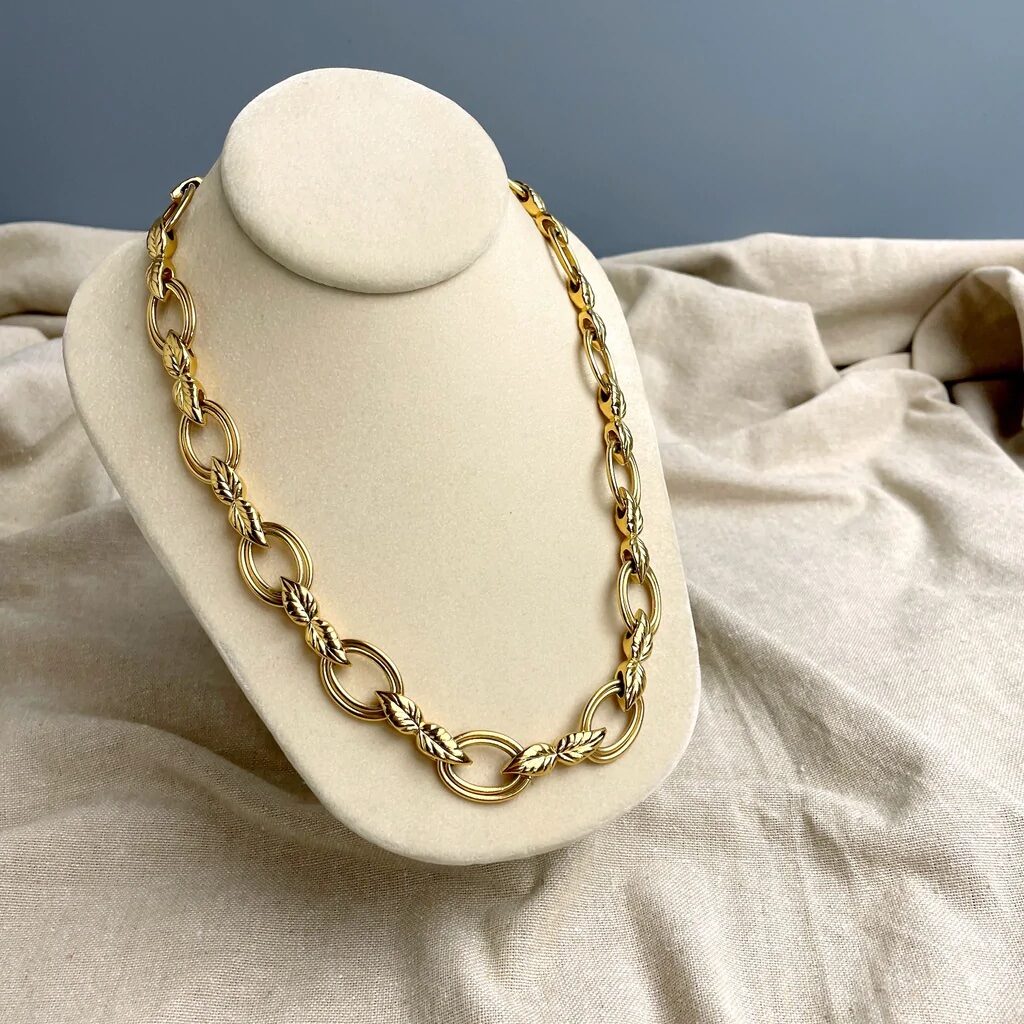
This statement necklace by Napier is beautifully articulated and finished. It’s yet another testament to the enduring beauty of good quality costume jewelry. There is a patent number on the clasp.
If you search on “Napier 4774743” you’ll find that it’s not a rare piece and that quite a few online sellers use the number as the pattern number. It’s a fair thought, pat-ent and pat-tern.
We assumed that the patent would be for the whole necklace design. We were wrong. The patent is for the clasp only. Here’s why: a patent provides protection for an invention. The necklace would be copyrighted because copyrights protect original artistic and literary works. Jewelry is considered a sculptural work under copyright law in most cases.
What I found out from the patent search that was helpful for writing a description to list the necklace online was that the clasp patent was granted in 1988. So that means this necklace is likely from the 1980s or 1990s. That is helpful (although the style also told me that.)
What I found out from the patent search that was not the least bit helpful from a selling perspective but was interesting was that the clasp was designed by Herbert Ziemelis. Mr. Ziemelis designed other clasps for Napier. Before clasps, he designed roller guides for fishing poles for the Mildrum Manufacturing Co., a company that manufactured fishing pole guides and tops. In the late 1970s, there must have been layoffs at Mildrum. Per The Federal Register (Vol. 44, No. 6), workers petitioned for and were granted worker adjustment allowances. The reviewing official stated that an increase in imported products similar to what Mildrum made had lead to a substantial decrease in sales, resulting in “the total or partial separation of workers from the firm.”
Mr. Ziemelis survived those layoffs, we know this because his roller guide patents were from the 1980s. But something either happened to the company or his job because by the 1990s, he was using his skill to make jewelry clasps. He’s a creative guy who invented ways for useful things to work better.
Those are the stories about researching vintage. A couple of searches and we knew more about the thing sitting before us than we ever imagined we would need or want to know about a food mill, rivet/eyelet punch or necklace clasp. Easy wins like those offset those infuriating days researching vintage and antiques that don’t have a starting point like a patent. You try different search terms and put in much more than a reasonable amount of time, but you keep digging your rabbit hole deeper. You know that the right string of search terms is on the tip of your tongue and you’ve already invested so much time that there is zero chance you are giving up. If you find yourself having one of the latter days, you might find Henry Renner’s 1936 patent 102,957. useful.
Find out more about researching vintage:
The Progress is Fine blog has an interesting post on William Bernard and his pliers.
How to search for patents from the US Patent and Trademark office.
The Smithsonian rounded up 11 Cool, Funny or Just Plain Strange Patents for Back to School.
Wonder why we research vintage? We wrote about that.
Pin it!
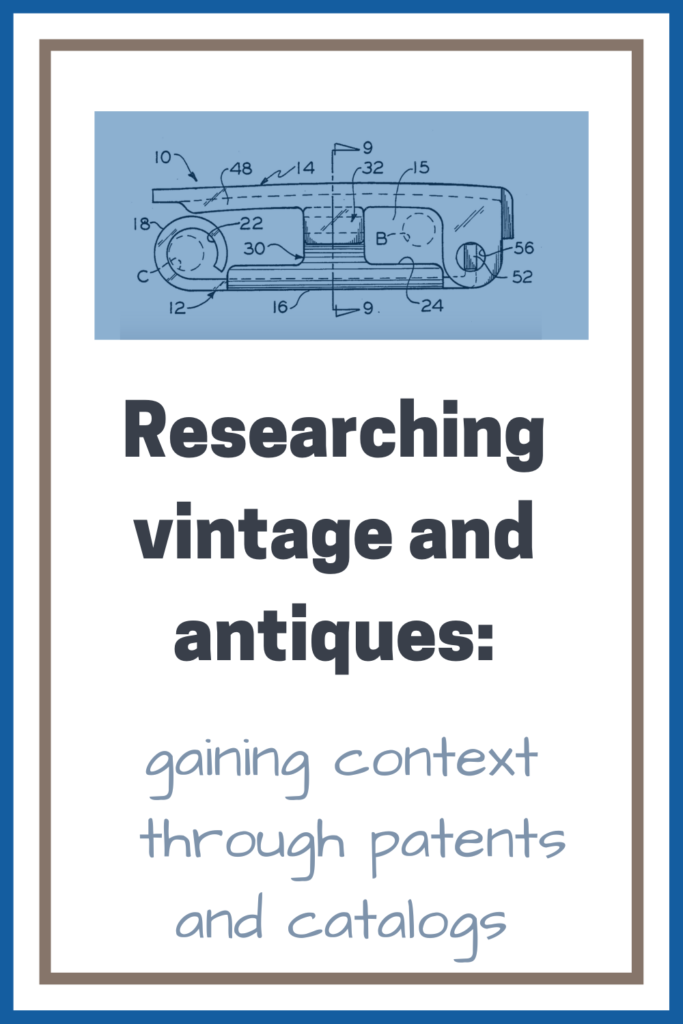

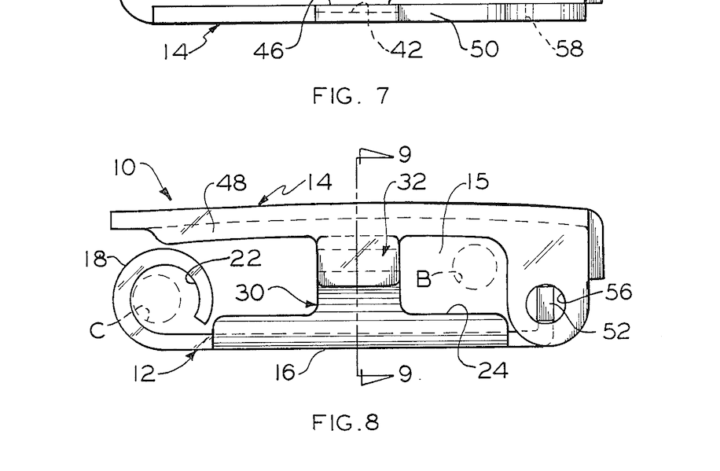
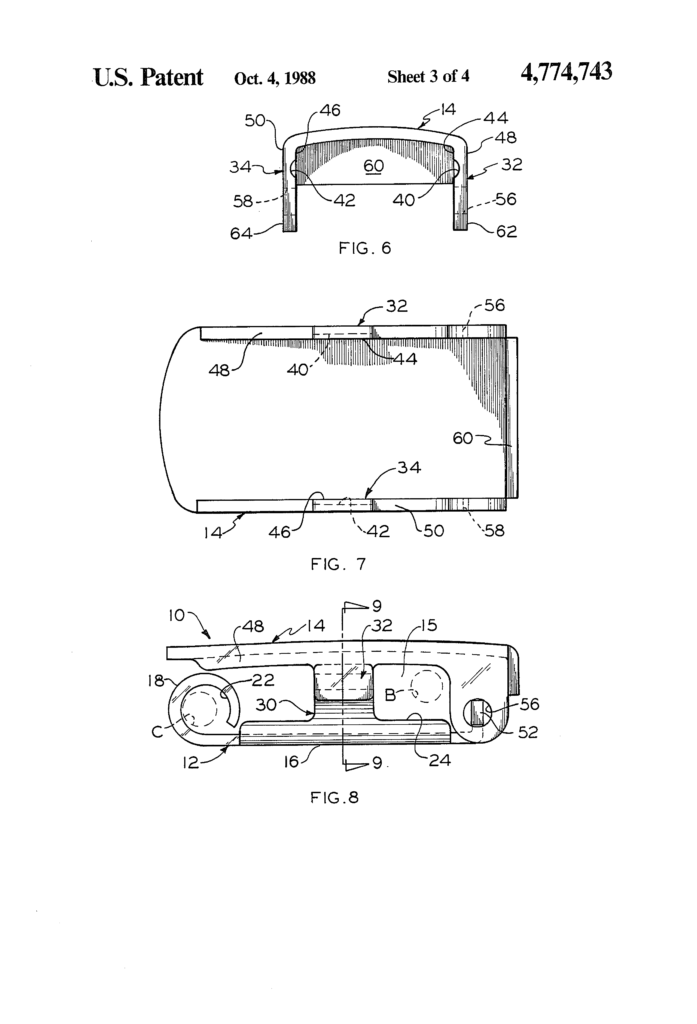

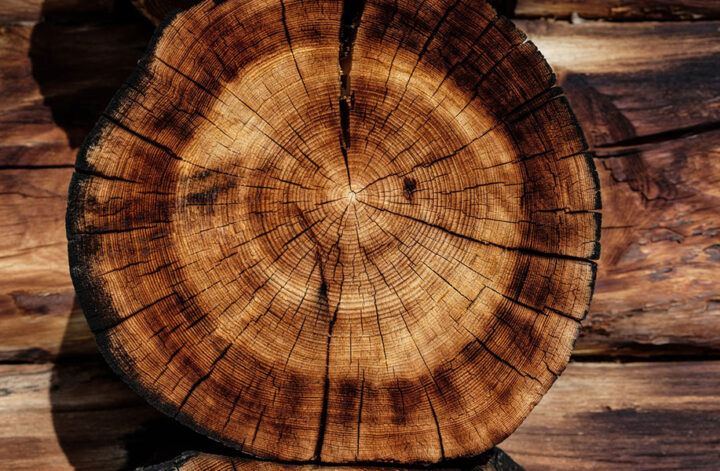
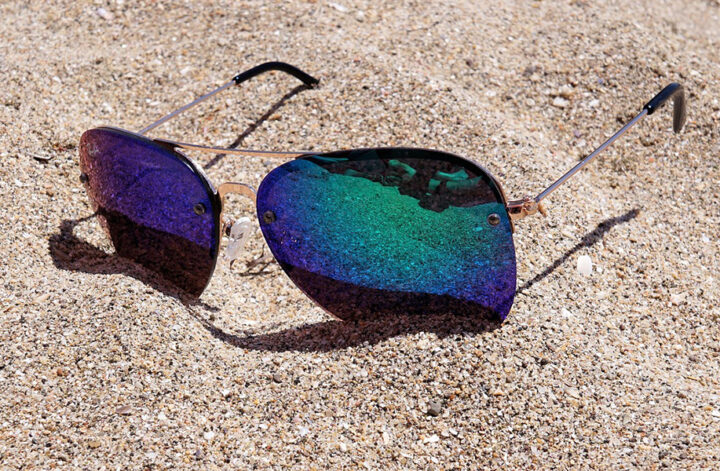
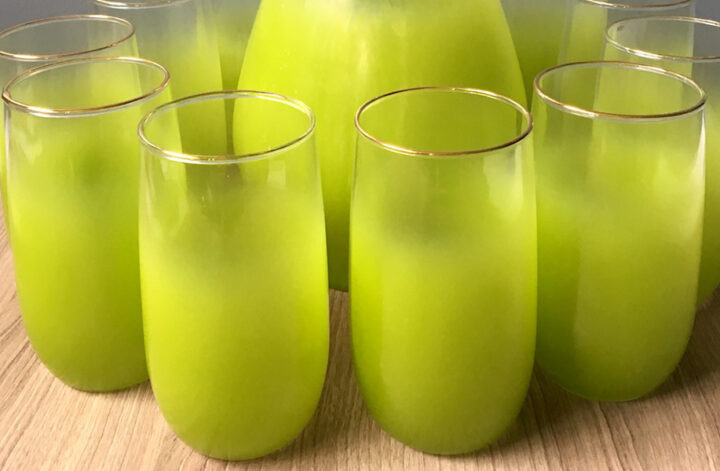
1 comment
This is a fabulous post! Nothing better than going down that rabbit hole and learning something new!
Thanks so much for this Laurie.